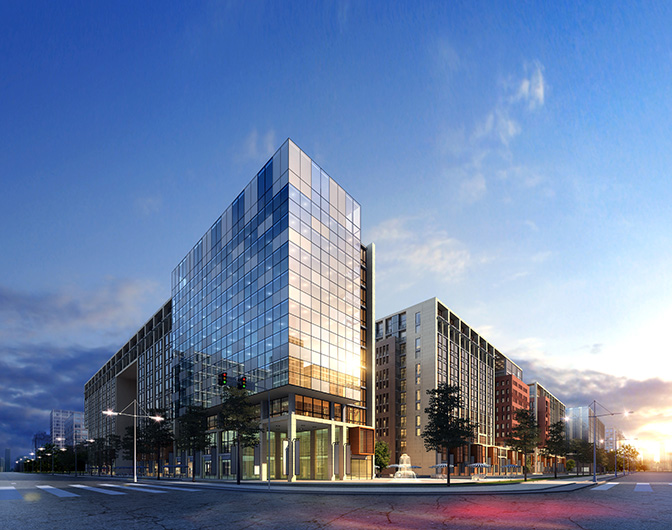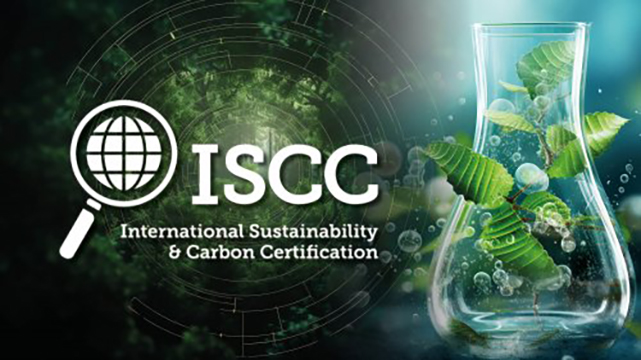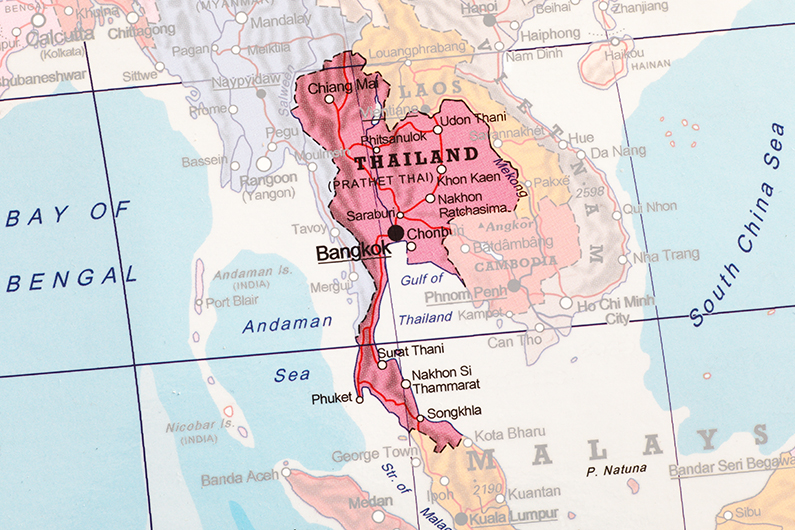More news
- Focus on industrial: Powering the energy industry during extreme heat
- Focus on powder coatings: The coatings industry’s transition to PFAS/PTFE-free solut...
- “We see sustainability as a purpose, as a reason for doing business” – P...
- Focus on industrial: High-performance coating protects tanks at biopolymer production plan...
- Focus on powder coatings: Novel high-speed crosslinking technology

PPG experts discuss choosing the right coil coating system for every application, comparing the pros and cons of SMP and PVDF coatings
Silicone-Modified Polyester (SMP) and Polyvinylidene Fluoride (PVDF) coatings are two widely used coil-applied coating systems in the metalbuilding products industry.
Because these polymers are engineered to withstand extreme weather conditions, each provides a formidable barrier against UV exposure, humidity, salt spray and chemicals that can degrade the coating system. While both are excellent choices for preserving the structural integrity and aesthetics of metal building products, there are important distinctions between them due to their specific chemical compositions.
This paper will explore the differences between 70% PVDF and SMP coatings in terms of their chemistry, expected long-term performance, cost considerations, UV durability and colour stability. The paper will also provide an update on newer generations of SMP formulations that are closing the performance gap with PVDF fluoropolymers, as well as market forces that are driving demand and use of SMPs on a wider range of applications.
The four main components of coil coatings
All coil coatings, including SMPs and PVDFs, are comprised of four primary components: resins, pigments, solvents and additives.
Resins are the building blocks of any coating system. They act as binders to hold pigment particles together and help the paint adhere to the metal. Resins are also responsible for the performance properties of a coating, such as colour and gloss retention; resistance to moisture, UV rays and chemicals; and mechanical properties like flexibility, impact resistance and hardness.
Common coil resin types include silicone-modified polyester, polyester, acrylic, epoxy and polyvinylidene fluoride. While the resin is a component of the coating, they are commonly referred to by their resin type, hence the classification of SMP and PVDF paint systems.
Pigments are insoluble solid particles produced from natural occurring minerals or by man-made chemical processes that give coatings their colour and, in some instances, solar reflectivity. There are two main classes of pigments – inorganic and organic. The chemical structure of each pigment determines their colour space, strength and stability.
The role of pigments is not limited to aesthetics. Each type varies widely in terms of quality, corrosion resistance and UV durability —factors that impact the overall performance of the coating. Some important attributes of pigments include their colour, hiding power, solar reflectance, tinting strength and special effect capabilities.
In terms of resilience, inorganic pigments are the most chemically stable and fade resistant, offering robust defense against light, chemicals, weather and heat. Consequently, they are the default choice for coatings systems used for exterior buildings and warranted to meet the most demanding performance expectations.
These synthetic or naturally occurring colourants do not contain carbon-based molecules and are made from minerals, metal oxides, metal salts or, in some cases, metal oxides fused under high temperatures. The latter are referred to as “ceramic” pigments and are valued for their stable nature.
Organic pigments are typically produced from carbon-based molecules. Though they offer a wide colour selection, these pigments are less resilient to UV degradation and change colour over time. Compared to inorganic pigments, organic pigments are less commonly used in exterior applications and only in specific colour spaces with limited warranties.
The colour space determines the choice of pigments, but the majority of premium PVDF and SMP products engineered for commercial building products use inorganic pigments with very limited or no organic pigments.
Unlike pigments and resins that determine the long-term protection and retention of colour and gloss, solvents have minimal impact on actual coating performance, but they do play a critical role in an essential function — application.
Solvents dissolve the resins and other additives to a desired consistency and disperse pigments throughout the paint for uniform colour, easier application and a smooth, even finish.
During the curing process, these solvents evaporate, leaving the resins and pigments behind to form a high- quality paint film. When specifically formulated, both SMP and PVDF coatings can be applied by a coil coating process or spray applications.
Additives are used to prevent defects in the coatings, like bubbling or uneven levelling, or to impart specialised properties, such as UV protection or colour stability.

READ MORE:
Building Safety Act: The Golden Thread offers peace of mind, says Sherwin-Williams
View from the UK: UK REACH and Net Zero
Biocidal products in coatings: treated articles or biocides? The European Commission approach
Coatings strength relies on the sum of all parts
When it comes to film integrity, colour stability and UV durability, a coating is only as good as the sum of its parts. Both strong resins and high-quality pigments are needed for robust performance.
Premium resins blended with weak pigments have a greater potential to chalk and fade, but strong resins coupled with strong pigments in a balanced formula will deliver long-lasting performance.
PVDF resins
PVDF is a semi-crystalline, highly inert and stable thermoplastic fluoropolymer. PVDF resin-based coatings are one of the most widely used ultradurable coating systems on the market today and set the benchmark for performance in the metal coating industry. Coatings companies have used this technology for over five decades, proving their superior longevity.
PVDF polymers consist of alternating carbon-hydrogen and carbon-fluorine groups. The carbon-fluorine bonds are one of the strongest in the chemical world, providing PVDF with exceptional chemical and photochemical resistance to UV radiation, moisture and atmospheric pollutants. What drives this gold-standard level of protection is a formulation that is comprised of 70% polyvinylidene fluoride polymer and30% proprietary acrylic resins. This balance offers optimal adhesion, weatherability and UV durability properties.
SMP resins
SMP coating systems are created by combining a durable polyester resin backbone with silicone-based polymers to achieve longer-lasting gloss and colour retention than what would be achieved by the polyester resin alone. SMP molecules are based on carbon- hydrogen, carbon-oxygen, carbon- silicone and silicon-oxygen bonds. While these chemical bonds are strong, they are generally less robust than those found in fluoropolymers, making them more vulnerable than PVDFs to long-term UV exposure that can degrade the coating. While these varying chemical structures explain their performance differences, newer, higher-quality SMPs are closing the performancegap with PVDFs.
PVDF vs. SMP

Caption: SMP coatings used in a residential scenario
Cost and market applications:
From both a performance and cost perspective, fluoropolymers are a premium coating system. For applications that demand the highest durability, 70% PVDF coatings are regarded as the top choice due to their strong resistance to UV exposure, humidity and pollution. They are the preferred system for use on metal roofing, curtain walls, wall panels and monumental applications like skyscrapers, stadiums and high-end commercial buildings.
PVDFs have a long lifespan and require less maintenance over time, but they do come with a higher applied cost. While recent supply chain issues are easing, the pricing gap has widened between SMPs and PVDFs. Based on both cost and performance, silicone-modified polyesters are considered to be a solidly strong mid-tier market solution, positioned between standard polyesters and PVDF formulations.
Competitively priced SMPs have an attractive price-to-performance ratio, making it the favored coating for the pre-engineered building industry for functional structures like warehouses, storage, pole buildings, barns and residential applications.
Physical performance:
Compared to lower priced coating systems, PVDF formulations are known for their colour retention properties, as well as unmatched resistance to UV radiation, moisture, dirt, airborne particles, acids, pollutants and chemicals. Because the PVDF polymer is highly fluorinated and inert, PVDF-based coatings offer superior resistance to weather, even in extreme climates.
PVDF-based coatings are also very flexible, which helps to prevent fractures that can occur during manufacturing and roll-forming process. In some instances, however, the thermoplastic nature of PVDF may have a higher propensity to damage from handling or installation, requiring a higher level of care. One of the primary benefits of a silicon-modified polyester coating is a hard, durable finish that has excellent resistance to scratches and abrasions.
|
Depending on the application and its environment, SMPs are increasingly becoming a viable, lower-cost alternative to PVDFs. Plus, recent advancements in resin and pigment technologies are making it applicable for a wider range of architectural, residential and commercial projects. Both SMPs and PVDFs offer solar reflective pigments that help to keep buildings cooler with less energy.
Weathering:
In terms of long-term weathering, film integrity, colour change and chalking are three primary concerns. The type of coating system used has a direct impact on these key performance measures. Film integrity is defined as the absence of peeling, chalking, chipping or cracking over an extended period. Chalking is a powder-like substance on the surface of a coating, a result of the breakdown of resins and pigments from UV radiation. Chalking eventually leads to loss of color and gloss and the ultimate degradation of film integrity. In accordance with ASTM D4214-98 test procedures, it is measured by rubbing the weathered coated surface with a soft fabric and measuring the amount of powder that is picked up on a scale from 1 (extremely poor) to 10 (perfect).
Fade is measured in terms of the change in colour and gloss from its original application state, per ASTM D2244-02 procedures. After extended years of UV exposure, PVDF coatings and polyester coatings will react differently in exterior environments. In the initial years of exposure, both systems will have a slight shift in color fade and chalk values; yet, over time, their differencesbecome more apparent.
All coatings eventually break down, but PVDF systems offer the highest resistance to chalking and fading with a very gradual decline overdecades of exposure. SMPs and PVDFs both have similar, excellent film adhesion and surface performance, but SMPs are less durable over the same extended period than PVDF coatings in terms of weatherability, colour fastness, gloss retention and chalking. Manufacturers need to weigh the loss in aesthetic and protective performance against the premium- priced PVDF systems.
Performance history:
When it comes to proven performance in the field, PVDF coatings reign supreme. Since their debut in the 1960s, they have been continuously subjected to exposure testing in South Florida’s sub-tropical climate and analysed against multiple coatings chemistries. Monumental buildings around the world protected with PVDF systems illustrate the value of these formulations.
While SMPs lack 50 plus years of testing data, they have undergone exposure testing in South Florida for over 25 years, giving manufacturers and coating companies valuable insights and confidence in the long- term weatherability of their products.

Caption: PVDF coatings used on a monumental building
Summary
PVDFs have a long, well-documented history as one of the most widely used coating systems for the premium building products exterior market, heralded for unsurpassed performance, film integrity and long-lasting resistance to chalking, fading and extreme weather conditions.
- Well-suited for extreme environments
- Best for intense sun exposure
- Proven performance across a wide colour space
- Can be used with cool coating technologies
- Colour stability for decades
- Optimal warranty for chalking and fading
- Good film adhesion
SMP coating systems are an excellent choice for a wide market of building end uses with robust film properties that are engineered to last and meet the demands of roll formers and installers. While they provide a tough finish and are more economically priced than PVDFs, SMPs are more vulnerable to chalking and fading with long-term exposure. Due to their competitive pricing and durable finish, they are popular options for residential, industrial and agricultural uses.
- Superior film adhesion
- Available with cool coating technologies
- Attractive price-to-performance ratio
The landscape is changing
In recent years, the rising costs and availability of PVDF resins have made the generational advancements in resins used in SMPs a more economical and attractive option to contractors and building owners. Manufacturers should weigh the cost, end-use application and environment to determine which system is optimal for eachsituation.
While PVDFs remain the gold standard for metal protection and aesthetics, SMP systems that are engineered with newer, premium resins and pigments are making it a viable option for a growing array of building applications at a more competitiveprice point.
PPG PVDF and SMP coatings
Not all premium polyvinylidene fluoride or silicone-modified polyester coatings are created equal. Proven formulas and quality raw materials are essential for lasting durability and colorfastness.
PPG, a global leader in architectural metal coatings, utilises only strong, field-tested pigments; durable and proprietary resins; and PPG application-specific solvent blends in both their flagship Duranar® 70% PVDF coatings and PPGDurastar® Ultra-Cool® silicone-modified polyester coatings.
Meeting the highest performance standard for an exterior architectural coating, FGIA/AAMA 2605, PPG Duranar coil coatings are multi-coat systems consisting of, at a minimum, a corrosion-inhibitive primer and a fluoropolymer topcoat. Depending on substrate, colour, effect and end-use location, some Duranar products may require an additional barrier coat and/or clear coat layer.
Available with cooling technologies and colour-shifting pigments, PPG Duranar coatings are available in over 100,000shades, including solids, metallics and micas. For over 55 years, it has remained the most trusted, recognised and specified fluoropolymer coating on the market and protects some of the world’s most iconic architectural landmarks.
With over 25 years of exposure testing, Durastar Ultra-Cool coatings are formulated to provide the exterior durability necessary for agricultural, industrial, commercial and residential metal roofing and sidewall panels. They are designed for two-coat application on properly cleaned and pretreated aluminium and steel substrates, including hot-dip galvanised steel, GALFAN®, GALVALUME® and ZINCALUME® substrates.
Durastar formulas use the same high-quality pigments as premium Duranar paint systems, but meet the intermediate FGIA/AAMA 2604 performance standard. They also utilise PPG’s universal urethane building primer and PPG developed solvent blends.
For more information about PPG Duranar 70% PVDF or PPG Durastar SMP coatings, please visit ppgindustrialcoatings.com, click Markets and select Coil Coatings or call: +1 800 258 6398.







